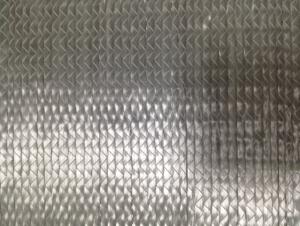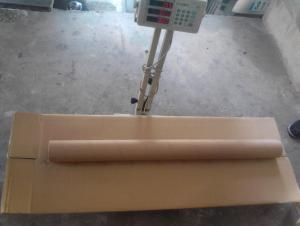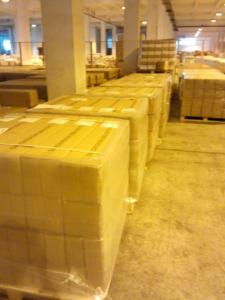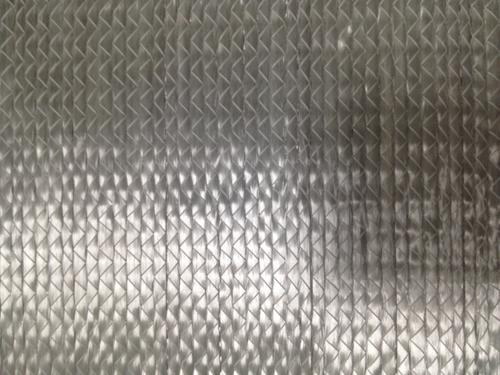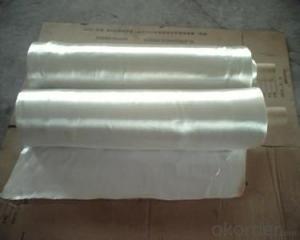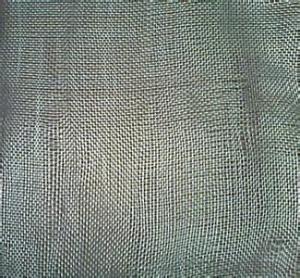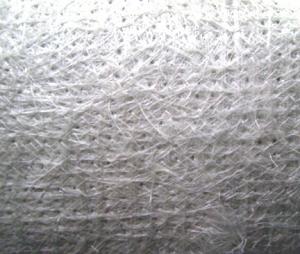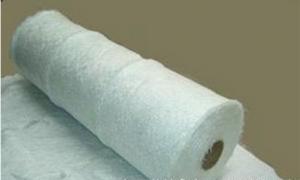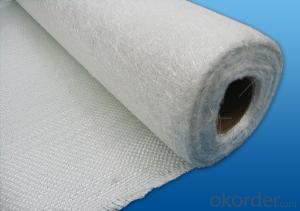Glass Fabric e-glass Stitch Combo Mat - LT
- Loading Port:
- China Main Port
- Payment Terms:
- TT or LC
- Min Order Qty:
- -
- Supply Capability:
- -
OKorder Service Pledge
OKorder Financial Service
You Might Also Like
Brief Introduction For E-GLASS STITCH COMBO MAT- LT:
Eglass stitched Combo Mat is a complex mat made by stitching together alayer of rovings consisting of parallel aligned rovings 0°,90°or ±45°and alayer of evenly distributed chopped strands.
E-glassstitched combo mat consists of two or more layers of fiber glass rovingswhich are stitch-bonded. one layer of rovings and differene layers of rovingscan be oriented differently and have different linear density. the rovingspecification, number of roving layers, mat width and roll diameter can becustomized as per requirement.
It’scompatible with UP, vinyl-ester, phenolic and epoxy resin.
Characteristics For E-GLASS STITCH COMBO MAT- LT
1. Manufactured by own factory
2. Good wet-out in resins
3. Good strand dispersion and uniform area weight.
Specification For E-GLASS STITCH COMBO MAT- LT
Specification | Woven roving (g/m2) | chopped(g/m2) | Polyester Yarn Density(g/m2) | total weight(g/m2) |
E300/300 | 308 | 302.25 | 6.3 | 616.55 |
E500/300 | 507 | 302.35 | 9.1 | 818.45 |
E500/450 | 507 | 458.17 | 9.1 | 974.27 |
E600/275 | 612 | 274.64 | 9.5 | 896.14 |
E600/300 | 612 | 305.15 | 9.5 | 926.65 |
E600/450 | 612 | 457.73 | 10.71 | 1080.44 |
E800/275 | 847 | 274.64 | 10.71 | 1132.35 |
E800/300 | 847 | 305.15 | 10.71 | 1162.86 |
FAQ For E-GLASS STITCH COMBO MAT- LT
a.Pacage
Each Eglass stitched Combo Mat is wound onto a paper tube The roll is wrapped up with plastic film,and then packed in a cardboard box. The rolls can be vertically or horizontally placed. For transportation, the rolls can be loaded into a container directly or on pallets.
b.Product storage:
Unless otherwise specified, CHEMICAL FIBER GRIDDING CLOTH should be stored in a dry, cool and rain-proof area. It is recommended that the room temperature and humidity should be always maintained at 15℃~35℃ and 50%~75% respectively.

- Q: Can fiberglass fabric be used for insulation in petrochemical facilities?
- Yes, fiberglass fabric can be used for insulation in petrochemical facilities. It is commonly used due to its excellent thermal insulation properties, resistance to high temperatures, and ability to withstand chemical exposure. It helps in preventing heat loss or gain, protecting equipment and personnel from extreme temperatures, and enhancing energy efficiency in petrochemical facilities.
- Q: Can fiberglass fabric be used for geotextiles?
- Yes, fiberglass fabric can be used for geotextiles.
- Q: Are there any specific cleaning or washing instructions for fiberglass fabrics?
- Yes, there are specific cleaning and washing instructions for fiberglass fabrics. When cleaning fiberglass fabrics, it is important to avoid any harsh chemicals or abrasive scrubbing, as they can damage the fabric's surface. Instead, it is recommended to use a mild detergent or soap mixed with water to gently clean the fabric. It is important to rinse the fabric thoroughly with clean water to remove any soap residue. Additionally, avoid wringing or twisting the fabric as this can cause it to lose its shape or stretch. Instead, gently squeeze out the excess water and lay the fabric flat to air dry. It is also advisable to avoid exposing fiberglass fabrics to direct sunlight for prolonged periods, as this can cause fading or damage to the fabric. Following these instructions will help maintain the integrity and longevity of fiberglass fabrics.
- Q: Home improvement how to do waterproof acceptance?
- For all other fields of moisture-proof and waterproof requirements of lightweight wall wall must be waterproof, waterproof treatment of the wall height should not be lower than 1.8m; the wall bottom should do C20 fine stone concrete wall wall pad, pad high floor is not less than 100mm. This is the most basic lightweight wall waterproofing requirements. For the acceptance of light wall waterproof construction, water spraying test shall be adopted. That is, the use of water pipes in the waterproof paint wall, from top to bottom continuous spraying 3, 4 minutes, the wall of the other side of the impermeable phenomenon can be checked and accepted.
- Q: Can fiberglass fabric be used for making sports equipment?
- Yes, fiberglass fabric can be used for making sports equipment. It is a lightweight, durable, and flexible material that is commonly used in the production of various sports equipment such as kayaks, surfboards, hockey sticks, and bicycle frames.
- Q: Can fiberglass fabric be used for gloves?
- Gloves can indeed utilize fiberglass fabric. This particular fabric is renowned for its exceptional durability and ability to withstand high temperatures, which makes it ideal for a wide range of industrial uses, including gloves. These gloves are commonly found in industries like manufacturing, automotive, and construction, where workers require protection against sharp objects, hot surfaces, and chemicals. To enhance their protective properties and provide comfort, the fiberglass fabric used in these gloves is typically coated or lined with a heat-resistant material. Nevertheless, it is crucial to be aware that some individuals may experience skin irritation or allergies when exposed to fiberglass fabric. In such cases, it is advisable to take proper precautions, such as wearing a liner glove or opting for gloves made from alternative materials.
- Q: Is fiberglass fabric suitable for making protective clothing?
- Yes, fiberglass fabric is suitable for making protective clothing. Fiberglass fabric is known for its excellent heat resistance and flame retardant properties, making it an ideal choice for protective clothing in industries where workers are exposed to high temperatures, sparks, and flames. The fabric is also lightweight and durable, providing comfort and long-lasting protection. Furthermore, fiberglass fabric has good insulation properties, protecting the wearer from extreme cold or hot environments. It is also resistant to chemicals, making it suitable for use in industries where workers are exposed to hazardous substances. However, it is important to note that fiberglass fabric can irritate the skin and cause respiratory issues if not properly handled or sealed, so proper precautions should be taken when working with this material.
- Q: What are the different weaves available for fiberglass fabric?
- Fiberglass fabric offers a variety of weaves, each with distinct qualities and applications. Among the most commonly used weaves are plain, twill, satin, and leno. The plain weave stands as the simplest and most prevalent option for fiberglass fabric. It consists of an equal number of warp and weft yarns crossing over and under each other in a straightforward pattern. This weave produces a durable and balanced fabric with excellent stability. Twill weave, another popular choice, involves the diagonal crossing of warp and weft yarns, resulting in a noticeable ribbing effect. Compared to plain weave, twill offers enhanced drapability and flexibility, making it ideal for applications requiring greater conformability. Satin weave is a more intricate option, yielding a smooth and lustrous fabric surface. It features long floats of either warp or weft yarns, resulting in fewer interlaced yarns and a lightweight, supple fabric. Satin weave finds its place in applications desiring a high-quality appearance and soft texture, such as clothing and decorative fabrics. Leno weave stands out as a unique option, involving the twisting of adjacent warp yarns to create an open mesh structure. This weave is commonly employed for fiberglass fabrics that require transparency, breathability, filtration, or reinforcement. Ultimately, the choice of weave for fiberglass fabric depends on the specific needs of the application. By considering factors like strength, flexibility, appearance, and breathability, one can select the most suitable weave to achieve optimal performance for their desired purpose.
- Q: What are the cracks between the brick wall and the beam column, the cracks between the planks and the cracks in the plasterboard?
- You describe these cracks, are essentially composed of different materials in the influence of temperature and humidity of the physical changes now to solve this kind of problem is late with ductile material recovery, wall and ceiling like corner cracking the case, that is to do the above method.
- Q: Can fiberglass fabrics be used for reinforcement in sporting goods?
- Yes, fiberglass fabrics can indeed be used for reinforcement in sporting goods. The strong and lightweight properties of fiberglass make it an ideal material for enhancing the strength, durability, and performance of various sporting equipment such as bicycles, kayaks, tennis rackets, and even helmets. Its ability to withstand high impact and resist corrosion makes fiberglass fabrics a popular choice for reinforcing sporting goods.
Send your message to us
Glass Fabric e-glass Stitch Combo Mat - LT
- Loading Port:
- China Main Port
- Payment Terms:
- TT or LC
- Min Order Qty:
- -
- Supply Capability:
- -
OKorder Service Pledge
OKorder Financial Service
Similar products
Hot products
Hot Searches
Related keywords
